|
Seasons greetings! The store is now closed for the holidays - Will be back in the new year. Happy Christmas and Best Wishes for 2026, Phil.
Commodore 64 Chips
Custom chips and discrete logic as used in the C64. The logic and memory chips will generally be new / unused, whilst custom chips (SID, VIC, CIA, 6510 etc) will have been harvested from boards and tested. There are many C64 fault finding pages and videos on the net, and I have put up some brief info myself here. Products:
Click on the product thumbnail for an enlarged view.
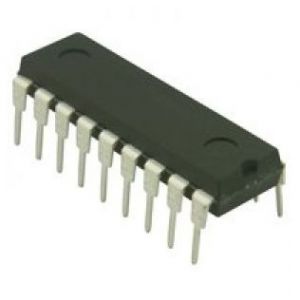
2114 Colour RAM (IC "U6" in breadbin, "U19" in C64C)
- Unused, old stock (not soldered) chips in good condition.
- Tested before dispatch.
- Note: Depending on supplies, equivalent chip may be sent (TMM314, LC3514A etc)
Typical symptoms when faulty in C64:
- Incorrect, random or flickering colour attributes on power up.
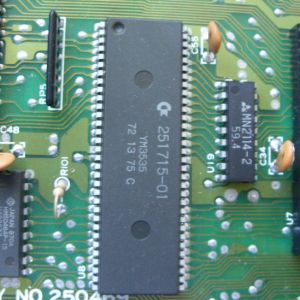
251715-01 64-pin PLA chip for C64C
- Desoldered and tested in a working board - Commodore diags passed OK.
- There are two versions of the C64C PLA - this chip is the type without an integrated colour RAM (ie: for C64C motherboards which have a 2114 IC at U19, eg: PCB no. 252311 Rev A, Rev 4)
- Note: No longboard 64 PCBs used this type of PLA.
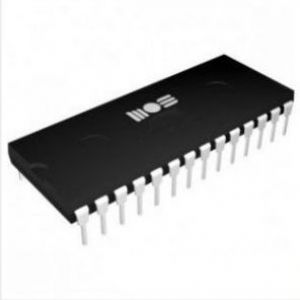
251913-01 BASIC/KERNAL ROM for C64C *De-soldered*
- 28 Pin combined BASIC/KERNAL ROM at U4 in the C64C
- Desoldered, and re-tested: OK

CMOS 4066 IC
- As used at IC locations U16 and U28 in the breadbin C64, and at U21 in the C64C
- Common symptoms when U16 is faulty: Colour problems such as random colour “chequerboard” pattern on screen or no colour.
- Problems when U28 is faulty: Paddle controller issues.

41464 / 4464 RAM Chip
- Organization: 64K x 4, Speed 120ns, Package: 18 pin DIL
- Old stock (not desoldered) chips: Good condition with long straight pins - all tested before dispatch.
- As used on late revision motherboards of Commodore 64, Spectrum +2A/+2B/+3
- Depending on stock, "4464" types may be supplied - these are the same RAM chips but with a different part number.
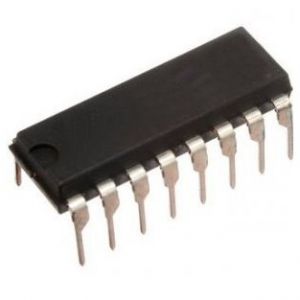
4164 RAM Chip for Breadbin C64 (excluding p/n: 250466 boards) Also used in the Amstrad CPC464 etc.
- Organization: 64K x 1, Speed: 150ns or faster. Package: 16 pin DIL
- As used in all but the last "breabin" C64 board (PCB p/n 250466 boards have 2 x 41464s instead of 8 x 4164s)
- Unused, clean, old stock parts (all chips tested for 2 hours before dispatch)
- Can also be used in the Commodore +4, Amstrad CPC 464 etc (replacing 4264 types) and Spectrum 16/48 for its Upper RAM (replacing 4532,3732) but NOT the Spectrum's lower RAM (4116).
Faulty RAM chips in the C64 often result in an "Out of Memory" error on boot or less than 38911 bytes free. A crude but often effective way to test which chip is bad, is to "piggy-back" a working chip on each RAM chip one at a time. If the error goes away or at least changes, there's a good chance that chip is faulty.

6510 CPU Chip
- Removed from a socket and tested in working board - chip has not been soldered.
- When these chips fail, common symptoms can be: Blank screen, No border, Cartridge doesnt work, Certain programs lock up.

6510 CPU for Commodore 64 *Desoldered*
- Desoldered chip with cleaned and straightened pins.
- Fully tested in a working PCB with diags and games
- If out of stock, check if the 8500 version (scroll down) is in stock - these will also work fine the breadbin.

6526 CIA chip for Commodore 64
Removed from an IC socket and tested in a working board - chip has not been soldered.
Some typical faults that can occur when these chips are bad in a C64 include:
- Keyboard stops responding
- No cursor / stops blinking
- Joystick doesn't work correctly
- "Device not present" error when accessing disk drive
- Disk drive continues to search when trying to load
- User port does not function
- After a few minutes, characters all over screen
- Certain programs freeze
- No response when loading from tape
If your board has socketed chips, a simple way to test the 6526 CIA chips is to swap over U1 and U2 (they're both the same IC). If the fault appears to go away or at least changes, you know one CIA is bad. If the keyboard and joystick work then you can be fairly sure the CIA in U1 is OK.

6526 CIA chip *De-soldered*
- Chip has been carefully de-soldered from a bad C64 PCB.
- Pins are in good condition.
- Tested at U1 and U2 locations - working fine in both (serial, tape load, joystick and keyboard functions OK)
- Chip supplied may be a 6526, 6526A or 6526B - when used in the C64 and C64C there's no difference.

6569 R3 VIC II PAL Video Chip
- Extracted from a socket - has not been soldered
- Tested for 1 hour on various games - all modes OK
- An R3 VIC-II can normally replace an R1 without problems, though like-with-like is usually preferred.
- A heatsink is recommended to prolong life of VIC-II chip if your C64 is a type without any (see mods section)
Some typical faults that can occur when the VIC chip is bad include:
- Blank screen
- Graphical glitches (especially in bitmap mode with the R3 VIC)
- Incorrect colour or none at all

7406 Logic IC
- As used at IC position U8 in the breadbin C64, and U22 in the C64C
- Common symptoms when faulty: Blank screen. Partial failure: Drive access problems, drive resets but “device not present” error when accessed.

74LS08 Logic IC
- As used at IC position U27 in the breadbin C64 and U3 in the C64C
- Common symptoms when faulty: Normal startup border but screen full (or nearly) of garbage characters.

74LS139 Logic IC
- As used at IC position U15 in the breadbin C64
- Common symptoms when faulty: Blank screen.
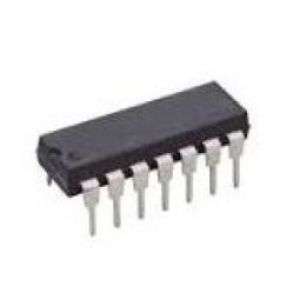
74LS14 Logic IC
- As used at IC position U23 in the C64C, and also in 1541 disk drive etc
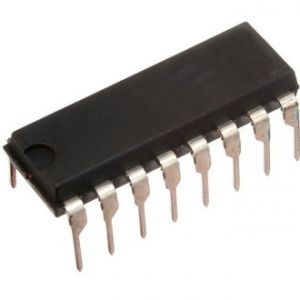
74LS193 IC
- As used at IC position U30 (within the VIC-II shielded area) on earlier C64 breadbin boards.
- Brand new genuine TI parts (beware of remarked Chinese fakes - they will not work in the C64)

74LS257A/AN/P Logic IC
- As used at IC postitions U13 and U25 in the breadbin C64
- Common symptoms when faulty: Blank screen, less than 38911 bytes free at startup or “garbage” screen.

74LS258 Logic IC
- As used at IC position U14 in the breadbin C64
- Common symptoms when faulty: Blank screen.

74LS373
- As used at IC position U26 in the breadbin C64
- Common symptoms when faulty: Screen startup has normal border, but characters are scrambled.

74LS629 IC
- As used at IC position U31 in the breadbin C64 (within the VIC-II shielded area) on earlier C64 boards.
- Unused, old stock IC (not soldered) - Tested: OK
- Common issues when faulty: No video output at all, a black screen, no colour (black and white video), rolling rainbow colour patterns or white dots in both screen and border.

74LS74 Logic IC
- As used at IC position U29 (in the shielded video area) on earlier breadbins.
- Common symptoms when faulty: Entire screen blank with noise pattern, startup screen shows normal characters in multicolored "rainbow"

7805 Voltage Regulator
Replacement 5 volt regulator IC for the Spectrum, (breadbin) Commodore 64, ZX81 etc

7812 Voltage Regulator
Replacement 12 volt regulator for (breadbin) Commodore 64
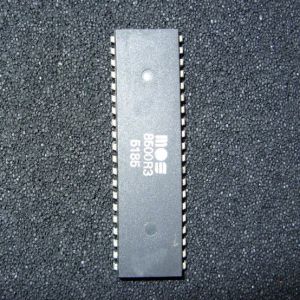
8500 CPU for Commodore 64 *Desoldered*
- As used mainly in the C64C but work fine in 'Breadbin' C64's too.
- Desoldered chip with cleaned and straightened pins.
- Tested in a working PCB.
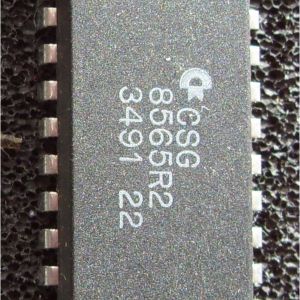
8565 R2 PAL VIC-II Chip *For C64C Only*
- Important: For C64C only (UK / European PAL version) - Not for breadbin C64.
- Extracted from a socket, has not been soldered.
- Tested: Working fine.

8580 SID Chip *For C64C Only*
- Very Important: For C64C only -This version of the SID chip is not compatible with the breadbin C64
- Extracted from a socket, has not been soldered.
- Tested with SIDBENCH, and by playing tunes from the HVSC for at least an hour - working fine.

MOS 8701 Chip from UK PAL C64C
- As found in later model breadbin C64s and the C64C near the VIC-II chip for system timing.
- Used (removed from a socket - has not been soldered.)
- Tested: Working.

901225 - 01 Character ROM for Commodore 64 (used)
Tested and removed from an IC socket - chip has not been soldered.
Typical faults that can occur with a C64 when these chips are bad include:
- Scrambled graphics in place of characters
- Glitchy Commodore font characters, especially when system is warm.
- C64 completely dead

901225 - 01 Character ROM for Commodore 64 *Desoldered*
- Has been desoldered and tested afterwards in a working boards - all bytes verfied OK.
- Pins are in good condition.

901226 - 01 BASIC ROM for Commodore 64
Tested and removed from an IC socket - has not been soldered.
Typical faults that can occur with a C64 when these chips are bad include:
- Constant Syntax Error
- Blank screen on power up
- When return is pressed, cursor returns to home position
- Poke command doesnt work

901226 - 01 BASIC ROM for Commodore 64 * Desoldered *
- Has been desoldered and tested afterwards in a working boards.
- Pins are in good condition

901227 - 02 Kernal ROM for Commodore 64
Tested and removed from an IC socket - has not been soldered.
Some typical faults that can occur with a C64 when these chips are bad include:
- Cursor jumps back to home position
- Restore key doesnt work
- Keyboard doesnt operate when system warms up
- Blank screen on power up
- Game cartridge doesnt function

901227 - 02 Kernal ROM for Commodore 64 *Desoldered*
- Chip has been desoldered from and then tested in a working PCB
- Pins are in good condition.

901227 - 03 Kernal ROM for Commodore 64 (used)
- Tested and removed from an IC socket - chip has not been soldered.
- The 901227-03 can also replace the 901227-02 type (it's virtually the same code with just a couple of bug fixes)
Some typical faults that can occur with a C64 when these chips are bad include:
- Cursor jumps back to home position
- Restore key doesnt work
- Keyboard doesnt operate when system warms up
- Blank screen on power up
- Game cartridge doesnt function

901227 - 03 Kernal ROM for Commodore 64 *Desoldered*
- Has been desoldered and tested afterwards in a working boards.
- Pins are in good condition

MC4044P Phase/Frequency Detector
- As used at IC location U32 (within the VIC-II shielded area) on earlier breadbin C64 boards.
- Common symptoms when faulty: Blank screen.
- Unused, old stock parts - Tested: OK

NE556N Timer IC
- 14-pin IC used at location U20 in the breadbin C64.
- Common symptoms when faulty: Blank screen, computer will not reset or RESTORE key doesn’t work.

PLA 906114-01 Chip
- Removed from a socket - chip has not been soldered.
- Tested for at least 1 hour: OK
- A heatsink is recommended to prolong life of PLA chip if your C64 is a type without any (see mods section)
- Other versions of the PLA are listed below when available.
When replacing a C64 PLA, ideally use the same version as originally fitted. Although they are all pin-compatible and perform the same job (logically) there are small timing differences which CBM accounted for on the 64's PCB. (Detail: The 906114-01 was Commodore's in-house replacement for the earlier, slower 82S100N. It has faster signal propagation times so Commodore added components R42 and C204 to 250407, 250425 & 250466 boards to slow down the DRAM timing output signal CASRAM.)
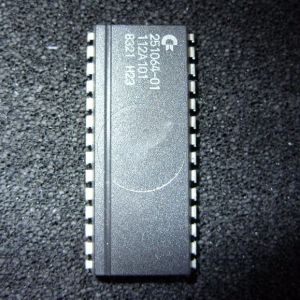
251064-01 (essentially the same as 906114-01) PLA Chip
- Removed from a socket - chip has not been soldered.
- Tested for at least 1 hour: OK
- A heatsink is recommended to prolong the life of the PLA chip - the 251064-01 has a recessed core so attachment with thermal adhesive is preferable (see mods section)
- Common symptoms when faulty: Black screen
When replacing a C64 PLA, ideally use the same version as originally fitted. Although they are all pin-compatible and perform the same job (logically) there are small timing differences which CBM accounted for on the 64's PCB. The PLA marked 251064-01 is most similar to the 906114-01.

82S100N PLA Chip
- Removed from a socket - has not been soldered.
- Tested: OK
When replacing a C64 PLA, ideally use the same version as originally fitted. Although they are all pin-compatible and perform the same job (logically) there are small timing differences which CBM accounted for in the 64's PCB. The 82S100N was fitted in early C64s (similar in nature to "93459 PC")
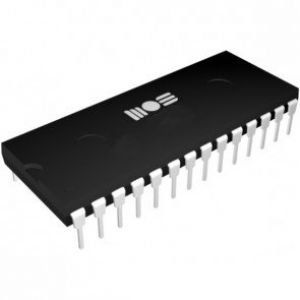
906114-01 PLA Chip *Desoldered*
- This item is a desoldered chip - the pins have been cleaned and straightened.
- Tested continuously for an hour: Working fine.
- A heatsink is recommended to prolong life of PLA chip (see mods section)
When replacing a C64 PLA, ideally use the same version as originally fitted. Although they are all pin-compatible and perform the same job (logically) there are small timing differences which CBM accounted for in the 64's PCB.
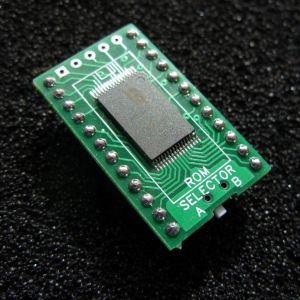
24-pin ROM replacement module
- Replaces 24-pin 8KB (and 4KB*) ROMs that have the standard EPROM pin out (eg: TMS 4764) and an active low output select pin, such as the breadbin C64's Kernal, BASIC and Character ROMs and Sinclair Interface 1 ROM
- Has an onboad switch allowing two different ROM images to be selected, if desired.
- Uses a very low power modern EEPROM chip.
- Please email me the ROM images you require on the module after purchase.
- Note: The module cannot be reprogrammed in a standard EPROM burner as it requires a special interface to set up.
- Currently PCB color: Black.
* Regarding 4K ROMs: As long as pin 21 on the PCB that's using a 4K ROM is tied high or low (ie: not left floating) no PCB modification is required (if it is floating, just connect pin 21 to pin 24 or pin 12 - either is fine). (In the breadbin C64, the Character ROM (U5) is 4KB, and pin 21 is pulled low already on the PCB so modification is required. (The BASIC (U3) and KERNAL (U4) ROMs are 8KB.)
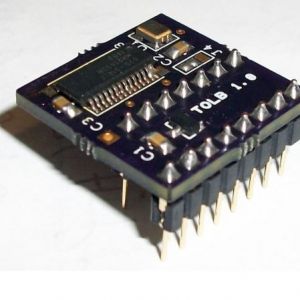
TOLB Module from Eslapion - PAL Version
As above but PAL version. Compatible with Commodore computers (with the PCB numbers stated above) carrying these video chips:
- MOS 6569 - Original NMOS PAL VIC-II (breadbin C64s)
- MOS 8565 - HMOS PAL-VIC-II (most C64Cs)
- MOS 8566 - VIC-II E PAL (C128)
PCB colour may vary - current stock are green.
|













































